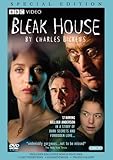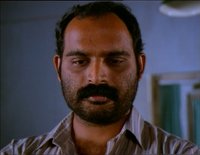[easyazon_image add_to_cart=”default” align=”left” asin=”B00P1WGHLI” cloaking=”default” height=”160″ localization=”default” locale=”US” nofollow=”default” new_window=”default” src=”http://ecx.images-amazon.com/images/I/51NRMoiRf2L._SL160_.jpg” tag=”disabilitymovies-20″ width=”114″]Though the focus of [easyazon_link asin=”B00P1WGHLI” locale=”US” new_window=”default” nofollow=”default” tag=”disabilitymovies-20″ add_to_cart=”default” cloaking=”default” localization=”default” popups=”default”]St. Vincent[/easyazon_link] is the unlikely friendship between an introverted young boy and his Brooklynite neighbor, themes of disability and caregiving are prominent. Though it isn’t revealed until late in the story, Vincent’s wife has dementia, and he’s spent every nickel he has–and then some–attempting to pay for the best of care in an unbelievably posh nursing home that looks more like a hotel. Vincent regularly visits her dressed in a white lab coat, pretending to be her cardiologist, in order not to distress her with the realization that she doesn’t remember him. In the outside world, however, he’s in a relationship of sorts with Duka, a churlish pregnant Russian hooker deserted by her usual clientele.
Vincent suffers a stroke at one point, and though he clearly needs some cognitive and physical therapy, it seems to be provided mainly by his neighbor and her son holding up flash cards and helping him pronounce words. Later he’s seen in a dismal physical therapy room, transferring marbles into a container with his toes with no therapist in evidence. One wonders just how much rehab the Veteran’s Administration provides, and whether it’s really sufficient. Vincent is seen to have trouble controlling his mouth muscles and a limp for the remainder of the film, but Duka takes over housekeeping duties for him.
The neighbor kid and his friend have to give Duka a lesson on polite terminology, because she has no qualms about using the “R-word”, and doesn’t know why it’s not OK to call someone a midget. Yet Duka isn’t completely insensitive to disability issues; she prevents Vincent from parking in a spot reserved for the handicapped until he proudly takes his new placard out of the glove compartment.
Vincent: “It’s the best thing that ever happened to me.”
Duka: “Because you have sad life.”
The final minutes of the movie explain the title: the neighbor kid arranges to have Vincent honored on stage at his Catholic school for his service to his country and wife, as part of an assignment to recognize the saintliness of ordinary people around them.







